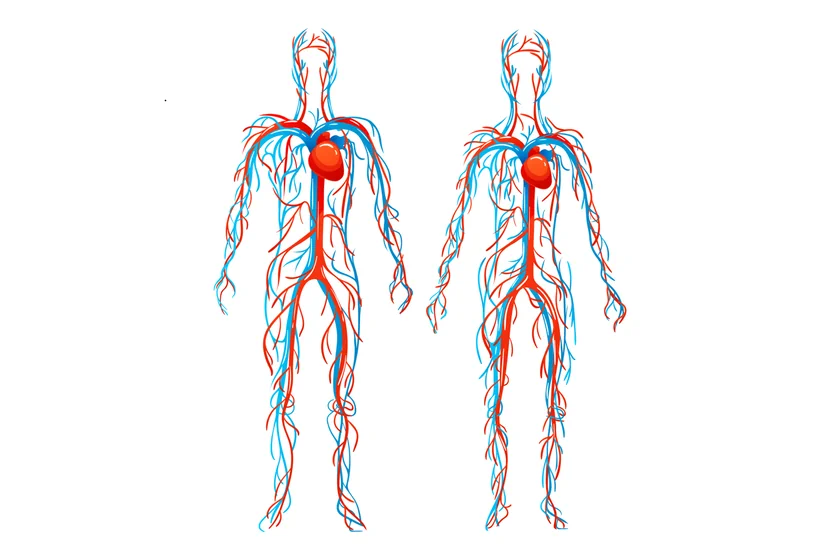
Understanding Vascular Trauma
I remember the day clearly.
It was a typical busy morning in the emergency room when the call came in. A young man had been in a severe car accident, and he was bleeding profusely. His life was hanging by a thread.
As a vascular surgeon, my job is to repair and restore blood flow to the injured blood vessels. This case was no different, yet every case feels unique because every patient’s life is unique. The adrenaline, the urgency, the precision – it’s all part of the job.
But seeing the relief on the faces of the patient’s family when I walked out of the operating room is what makes it all worthwhile.
This is the reality of vascular trauma, a condition that can strike without warning and demands immediate and expert intervention.
What is Vascular Trauma?
Vascular trauma refers to any injury to the blood vessels – arteries, veins, or capillaries – that disrupts the normal flow of blood. These injuries can range from minor to life-threatening and can occur in various parts of the body.
Vascular trauma can result from blunt force, penetrating injuries, or other traumatic events. It’s a serious condition that requires prompt diagnosis and treatment to prevent complications like hemorrhage, tissue damage, or even loss of limb.
Blood vessels are integral to the circulatory system, carrying oxygen and nutrients to tissues and organs. When these vessels are damaged, it can lead to significant blood loss and compromise the function of affected body parts. Understanding vascular trauma is crucial for timely intervention and effective treatment.
What are the Symptoms of Vascular Trauma?
The symptoms of vascular trauma can vary depending on the location and severity of the injury. Common symptoms include:
- Bleeding: Visible bleeding, especially in cases of penetrating trauma, is a clear indicator. Internal bleeding might not be immediately visible but can be equally dangerous.
- Swelling and Bruising: Rapid swelling or bruising around the injured area can indicate underlying vascular damage.
- Pain: Severe pain at the site of injury, which may radiate to other parts of the body.
- Pulsatile Mass: A noticeable lump or mass that pulses with the heartbeat, often seen in arterial injuries.
- Ischemia: Signs of reduced blood flow such as cold, pale, or blue extremities.
- Shock: Symptoms of shock, including low blood pressure, rapid heartbeat, and dizziness, can result from significant blood loss.
Early recognition of these symptoms is essential for prompt medical intervention and effective management of vascular trauma.
What Causes Vascular Trauma?
Vascular trauma can result from various types of injuries and accidents. Common causes include:
- Blunt Trauma: Motor vehicle accidents, falls, or sports injuries can cause blunt force trauma, leading to vessel compression, tearing, or rupture. In India, road traffic accidents are a significant cause of vascular trauma. According to the Ministry of Road Transport and Highways, there were over 150,000 fatalities and 450,000 injuries from road accidents in 2022, many involving vascular trauma.
- Penetrating Trauma: Stab wounds, gunshot wounds, and other penetrating injuries directly damage blood vessels.
- Iatrogenic Causes: Medical procedures or surgeries, such as catheter insertions or vascular surgeries, can sometimes inadvertently cause vascular trauma.
- Fractures: Bone fractures, especially in the long bones and pelvis, can damage nearby blood vessels.
- Crush Injuries: Heavy objects crushing a body part can compress and injure blood vessels.
Each cause of vascular trauma presents unique challenges and requires tailored approaches to treatment and management.
What are the Risk Factors and Complications?
Certain factors can increase the risk of vascular trauma, and understanding these can help in prevention and early detection:
- High-Risk Occupations: Jobs involving heavy machinery, construction, or exposure to violence.
- Active Lifestyle: Athletes and individuals involved in high-contact sports or activities.
- Medical Conditions: Patients with pre-existing vascular diseases or conditions that weaken blood vessels.
Complications from untreated or poorly managed vascular trauma can be severe and include:
- Hemorrhage: Severe blood loss can lead to hypovolemic shock and death.
- Ischemia and Necrosis: Inadequate blood flow can cause tissue death, leading to loss of limb or organ function.
- Infection: Open wounds and surgical interventions can introduce infections.
- Chronic Pain: Persistent pain and disability due to nerve or tissue damage.
Approximately 10-20% of major trauma cases in India involve vascular injuries, with peripheral vascular trauma being more common due to the high rate of limb injuries. Timely diagnosis and intervention are critical to prevent these complications and improve patient outcomes.
How is Vascular Trauma Diagnosed?
Diagnosing vascular trauma involves a combination of clinical assessment and imaging studies. The process typically includes:
- Physical Examination: Initial assessment of the injury site, checking for signs of bleeding, swelling, and pulse deficits.
- Doppler Ultrasound: Non-invasive imaging to assess blood flow and identify vessel injuries.
- CT Angiography: Detailed cross-sectional images to visualize blood vessels and pinpoint the location and extent of the injury.
- Magnetic Resonance Angiography (MRA): Provides high-resolution images of blood vessels using magnetic fields and radio waves.
- X-rays and Other Imaging: To identify associated fractures or foreign bodies that may have caused or resulted from the trauma.
Early and accurate diagnosis is essential for planning the appropriate treatment strategy.
What Treatments are Available for Vascular Trauma?
Treatment for vascular trauma depends on the type, location, and severity of the injury. Options include:
- Surgical Repair: Direct suturing, grafting, or bypass surgery to restore blood flow and repair damaged vessels. These may have to be performed mostly on an emergency basis.
- Endovascular Procedures: Minimally invasive techniques using catheters and stents to treat vessel injuries. The use of covered stents or stent-grafts to preserve blood flow to that specific organ, while sealing off the bleeding site is an innovative method available at advanced centres.
- Embolization: Controlled blockage of a blood vessel to stop bleeding using coils or other materials. Angioembolisation is the use of micro-coils which can be pushed or placed via small catheters passed through the femoral artery into the bleeding artery. Hence, via this technique small bleeding vessels which may be difficult to access by open surgery can be reached and bleeding controlled. This is especially useful in severe gastro-intestinal bleeding or bleeding from aneurysms.
- Wound Care and Infection Control: Managing open wounds and preventing infections through proper hygiene and antibiotics.
- Rehabilitation: Physical therapy and rehabilitation to restore function and mobility after severe injuries.
Each treatment approach is tailored to the patient’s specific condition and overall health.
Studies show that mortality rates from vascular trauma can be reduced by up to 50% with prompt surgical intervention and advanced medical care.
Despite the high incidence of vascular trauma, access to specialized vascular care remains limited in many parts of India. Increasing awareness and improving healthcare infrastructure are essential to address this gap.
Conclusion
Vascular trauma is a serious and potentially life-threatening condition that requires immediate and expert medical attention. Understanding the causes, symptoms, risk factors, and available treatments can help in the timely management of such injuries. In India, where accidents and traumatic injuries are prevalent, having access to skilled vascular surgeons is crucial.
Dr. Sumit Kapadia, renowned as the best vascular surgeon in Vadodara, has extensive experience in managing complex vascular trauma cases. His expertise and dedication ensure that patients receive the highest standard of care, significantly improving their chances of recovery and quality of life.
FAQs
Arterial injuries involve damage to arteries, which carry oxygenated blood from the heart to the body. These injuries can lead to severe bleeding and ischemia. Venous injuries involve veins, which return deoxygenated blood to the heart. While venous injuries can cause significant blood loss, they often present a lower risk of ischemia compared to arterial injuries.
Minor vascular injuries may heal with conservative management, including rest and monitoring. However, significant vascular trauma often requires surgical intervention to repair damaged vessels and restore proper blood flow. Ignoring severe injuries can lead to complications like hemorrhage, ischemia, and long-term disability.
Immediate medical attention is crucial for suspected vascular trauma. Delays in treatment can result in severe complications, including uncontrollable bleeding, tissue death, and loss of limb or life. If you suspect vascular trauma, seek emergency medical care promptly.
Recovery after vascular trauma surgery varies depending on the severity of the injury and the type of surgery performed. Patients typically require a period of hospitalization, followed by physical therapy and rehabilitation to regain strength and mobility. Regular follow-up visits with the vascular surgeon are essential to monitor healing and prevent complications.
While not all vascular trauma can be prevented, certain measures can reduce the risk. These include wearing protective gear during high-risk activities, practicing safety measures in the workplace, and being cautious to avoid accidents. Additionally, managing underlying health conditions that weaken blood vessels can help reduce the risk of vascular trauma.

MBBS, MS, MRCS, DNB-Fellow
Dr. Sumit Kapadia
Dr. Sumit Kapadia / MR KAPADIA SUMIT a gold-medalist from Baroda Medical College, obtained his general surgical training and senior residency from SSG Hospital, Vadodara.

MBBS, MS, MRCS, DNB-Fellow
Dr. Sumit Kapadia
Dr. Sumit Kapadia / MR KAPADIA SUMIT a gold-medalist from Baroda Medical College, obtained his general surgical training and senior residency from SSG Hospital, Vadodara.



